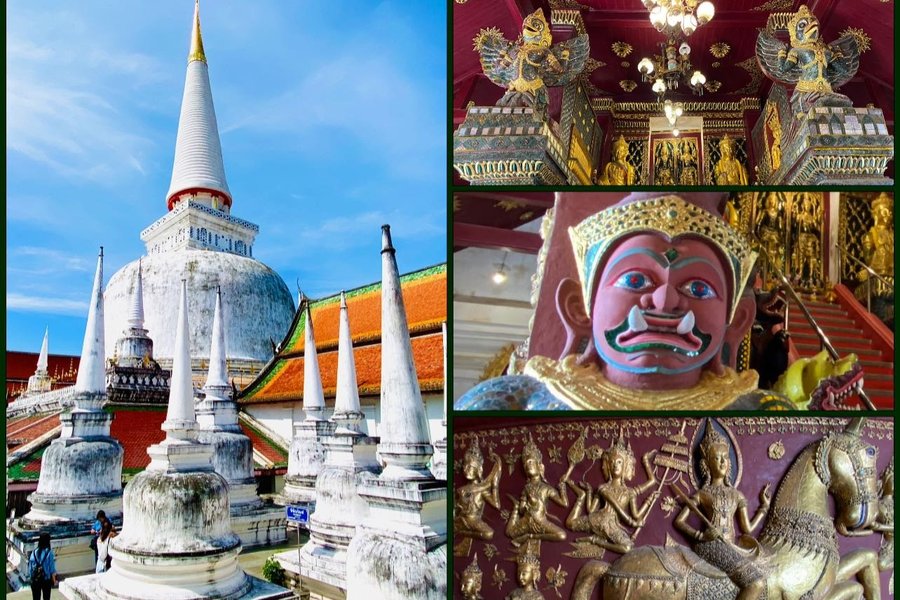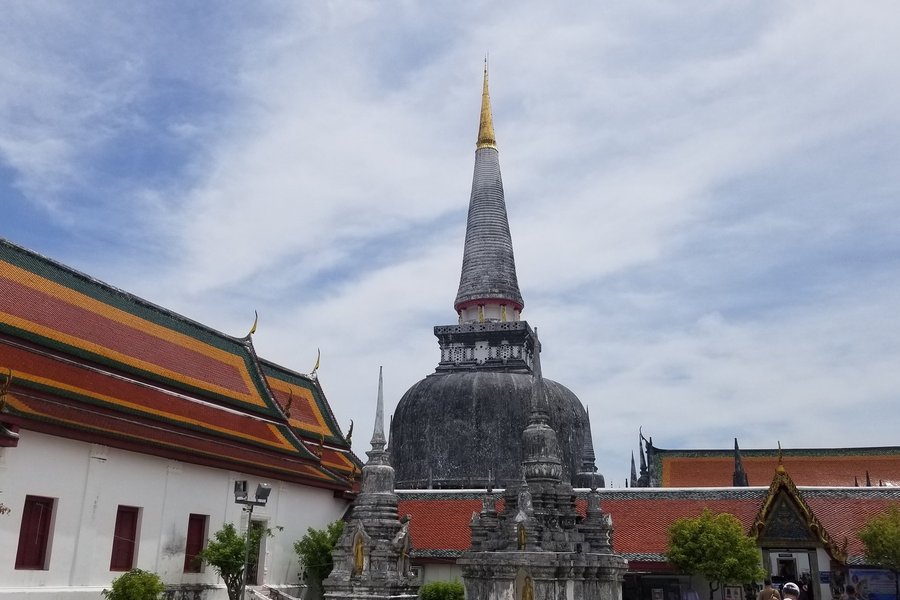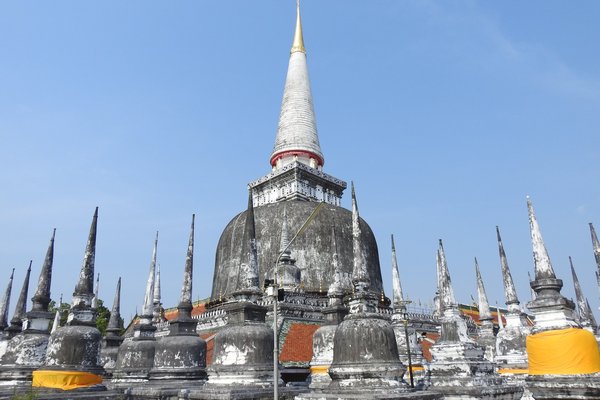Thailand
Wat Phra Mahathat
Site Info
Official Information
- Full Name
- Wat Phra Mahathat Woramahawihan, Nakhon Si Thammarat (ID: 5752)
- Country
- Thailand
- Status
-
Nominated 2026
Site history
History of Wat Phra Mahathat
- Type
- Cultural
- Criteria
- ii
- vi
Links
- UNESCO
- whc.unesco.org
All Links
UNESCO.org
- whc.unesco.org — whc.unesco.org
Community Information
- Community Category
- Religious structure: Buddhist
Travel Information
Recent Connections
News
No news.
Recent Visitors
- Danieljbromberg
- Priyaranjan Mohapatra
- Justin Rickey
- Roman Bruehwiler
- kamonpetch
- tony0001
- Jacob Otten
Community Reviews
Show full reviews
Driving from Hat Yai to Bangkok by rental car gave me the freedom to see Thailand, and for World Heritage Site enthusiast, a stop at Wat Phra Mahathat Woramahawihan in Nakhon Si Thammarat. The temple is a landmark of southern Thailand. The first thing that caught my attention was the temple’s majestic white chedi, towering above the grounds. Its slender form is quite different from the famous rounded Ruwanwelisaya Stupa in Anuradhapura, yet much closer in style to the Thuparama Stupa I once saw there, though here on a larger scale. The golden tip of the spire gleamed brilliantly in the sunlight, adding a dramatic flourish to its elegant profile. Sadly, I could not get close, as the chedi is surrounded by a cloister, but the courtyard more than compensated, it is filled with 158 smaller chedi, each echoing the central one, creating a strikingly harmonious sea of spires.
The Viharn Phra Song Ma, the main hall, is another highlight. Inside, stucco reliefs depict episodes from the Buddha’s life before ordination, while the space is also filled with statues of demons and mythical animals. These figures are rendered in a style distinct from mainstream Thai temple art; bolder, more otherworldly, and unmistakably local. This unique expression is recognized as the School of Nakhon Si Thammarat, a regional artistic tradition that set the city apart. The importance of Wat Phra Mahathat is inseparable from the history of Nakhon Si Thammarat itself. Once an independent and prosperous state, …
Keep reading 0 comments
Wat Phra Mahathat is a huge temple in Thailand south province of Nakhon Si Thammarat. You usually won't set foot into this area unless you are taking the ferry to Koh Samui which also isn't the most obvious way to go (flying is!). I drove from Chumphon airport which is a good 6 hours away and I don't usually recommend this. I added Songkhla to this trip and make it worth a little but again I don't think the journey is worth it. If you travel solo then flying around is probably easier anyway.
Google map led to the west of the temple but there is free parking east (AT the temple) so you don't actually have to duck into a side alley - not that anyone minds. I also had a fast entry to the toilet path so it didn't occur me any extra walking. From the toilets it's only 1 minute to the museum which I recommend visiting. It's also free but doesn't allow pictures so the above is technically taboo. You'll spend a good thirty minutes looking at everything, EVEN longer if you want. It's not really all related to the temple and I had seen plenty before but well, it's free, it's cooler than being outside, and you get to see plenty of interesting stuff. The rest of the area doesn't give you any indications why the temple grounds are important so this is the best insight.
Second thing to visit is the "Great Noble Relics …
Keep reading 0 comments
Wat Phra Mahathat is the largest Buddhist temple of Southern Thailand. It is also an especially holy one, as it houses the relic of a Tooth of the Buddha. This combined makes it a busy and important pilgrimage site. The temple is located in Nakhon Si Thammarat, one of the oldest towns in Thailand. Not much English is spoken or written here, the beach tourists and backpackers usually don’t make it this far south.
I arrived in the afternoon, after a 6-hour minibus ride from Phuket. Nakhon’s street layout is a bit weird, with parallel streets running north-south with some village-like neigbourhoods in between. The temple is a large structure along one of these north-south oriented streets, its main stupa is so huge it cannot be missed. There’s also a hive of activity in front and near it, as both souvenirs and offerings are sold in large quantities.
There’s no entrance fee to enter via one of the gates, and the site seems to be open all day. First, you arrive in the outer complex, which has a few freestanding structures. The main vihara is fully under scaffolding at the moment. There’s also a building with a two-tiered roof that contains a Buddha footprint shrine. And there are two smaller stupas.
A further gate will then introduce you to the inner complex, which houses the main stupa and 158 little chedis (with the ashes of devotees) around it. This 13th-century stupa is made in Singhalese style, its …
Keep reading 0 comments
